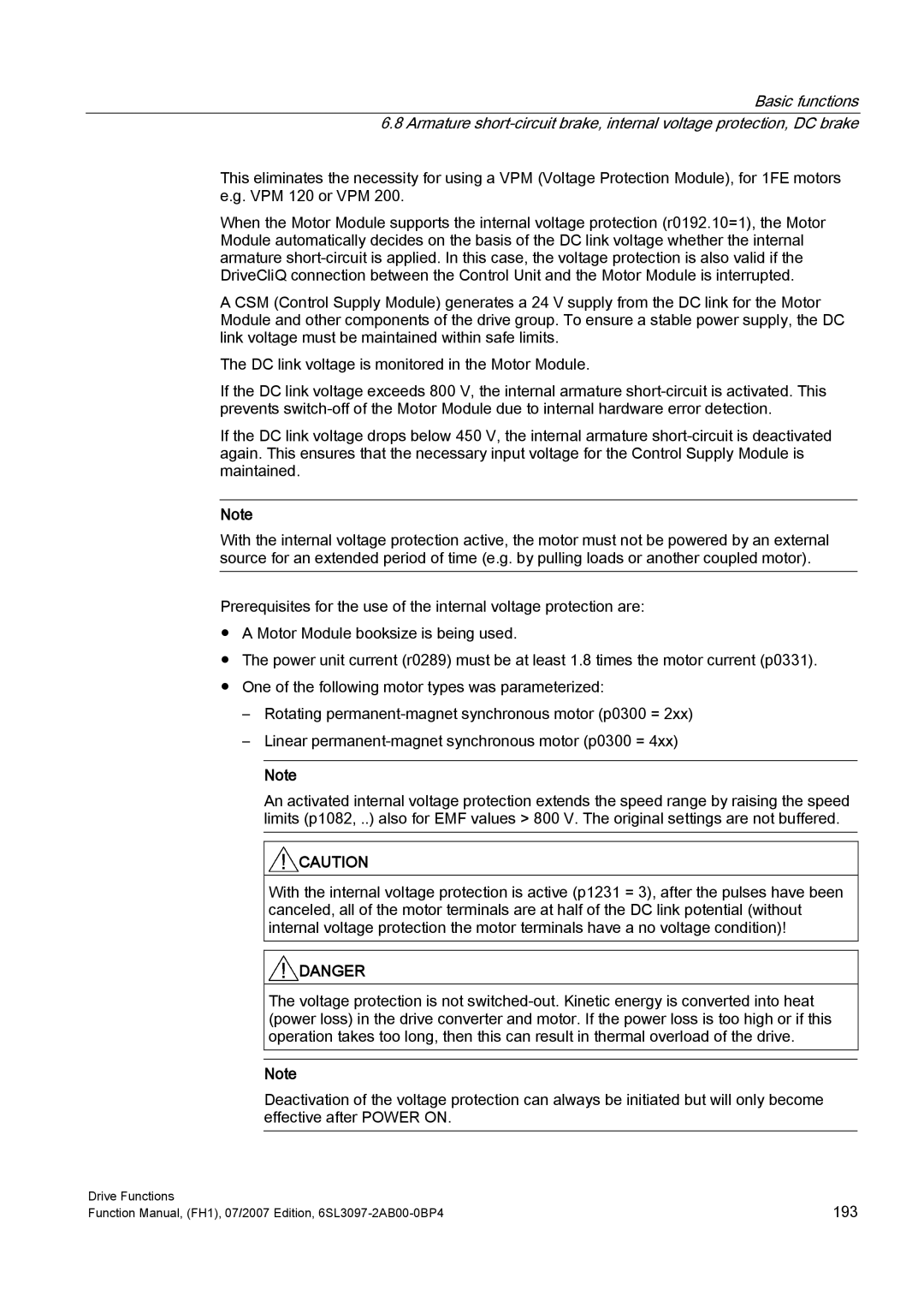
Basic functions 6.8 Armature
This eliminates the necessity for using a VPM (Voltage Protection Module), for 1FE motors e.g. VPM 120 or VPM 200.
When the Motor Module supports the internal voltage protection (r0192.10=1), the Motor Module automatically decides on the basis of the DC link voltage whether the internal armature
A CSM (Control Supply Module) generates a 24 V supply from the DC link for the Motor Module and other components of the drive group. To ensure a stable power supply, the DC link voltage must be maintained within safe limits.
The DC link voltage is monitored in the Motor Module.
If the DC link voltage exceeds 800 V, the internal armature
If the DC link voltage drops below 450 V, the internal armature
Note
With the internal voltage protection active, the motor must not be powered by an external source for an extended period of time (e.g. by pulling loads or another coupled motor).
Prerequisites for the use of the internal voltage protection are:
●A Motor Module booksize is being used.
●The power unit current (r0289) must be at least 1.8 times the motor current (p0331).
●One of the following motor types was parameterized:
–Rotating
–Linear
Note
An activated internal voltage protection extends the speed range by raising the speed limits (p1082, ..) also for EMF values > 800 V. The original settings are not buffered.
![]() CAUTION
CAUTION
With the internal voltage protection is active (p1231 = 3), after the pulses have been canceled, all of the motor terminals are at half of the DC link potential (without internal voltage protection the motor terminals have a no voltage condition)!
![]() DANGER
DANGER
The voltage protection is not
Note
Deactivation of the voltage protection can always be initiated but will only become effective after POWER ON.
Drive Functions | 193 |
Function Manual, (FH1), 07/2007 Edition, |
